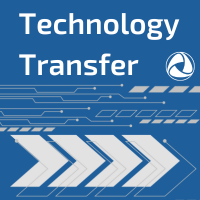Optimizing AI with OPTIMA

The 2020s have seen an immense deluge in the use of Artificial Intelligence deployed across the technology stack. While the societal gains are remarkable, the computing needs are requiring ever more power. OPTIMA, Optimum Processing Technology Inside Memory Arrays, seeks to develop compute-in-memory accelerator architecture that advances both intensive processing and power efficiency with a goal of supporting applications like AI. The OPTIMA program, launched by DARPA in 2023, is led by DARPA’s mentor for the JUMP 2.0 SUPREME Center, Dr. Jason Woo. Program performers were announced in early 2024—congratulations to SRC member IBM, prestigious universities Georgia Tech, UCLA, Princeton, and semiconductor manufacturer Infineon. All told, the OPTIMA program could reach $78 million over the nearly 5 years the program is set to run. This investment takes a great step forward towards addressing Seismic Shift #5, Compute Energy vs. Global Energy Production, described in detail in the Decadal Plan for Semiconductors.
What’s fascinating about the OPTIMA program is how this 2023 funding opportunity evolved. OPTIMA leverages technology originally developed in STARnet’s SONIC and LEAST centers and further refined in JUMP’s ASCENT center. Between 2013 and 2017, SRC and DARPA co-sponsored STARnet, a public private partnership aimed at tackling the fundamental physical limits threatening the long-term growth of the microelectronics industry. In STARnet’s SONIC Center, researchers Naresh Shanbhag and Naveen Verma began to explore computing-in-memory computing circuits. At the same time, researchers in STARnet’s LEAST Center pursued negative-capacitance field-effect transistors (NC-FET), which evolved into ferroelectric field-effect transistors (FeFET). This was further investigated in the SRC/DARPA Joint University Microelectronics Program (2018-2022) in the ASCENT Center, led by Suman Datta and Sayeef Salahuddin.
The long-standing partnership between SRC and DARPA creates tremendous value and significant technological advancement. The continuous process of inquiry and refinement lead to such successes as Professor Verma’s EnCharge AI start up, where he partners with IBM’s Kailash Gopalakrishnan, a valued member of the STARnet industry leadership. Today, the researchers who formed the core of this effort are spread throughout the SRC/DARPA JUMP 2.0 program and continue exploring fundamental research in the same space, using FeFET RRAM, NAND, or DRAM based computing in memory or near memory computing to discover the limits and applications. Congratulations to all who have made an impact on this incredibly valuable work, including current researchers Arijit Raychowdhury (COCOSYS Center), Saibal Mukhopadhyay (COGNISENSE Center), Suman Datta (PRISM Center), Sayeef Salahuddin (PRISM Center), and Shimeng Yu (PRISM Center). Let’s celebrate the culmination of their hard work!



